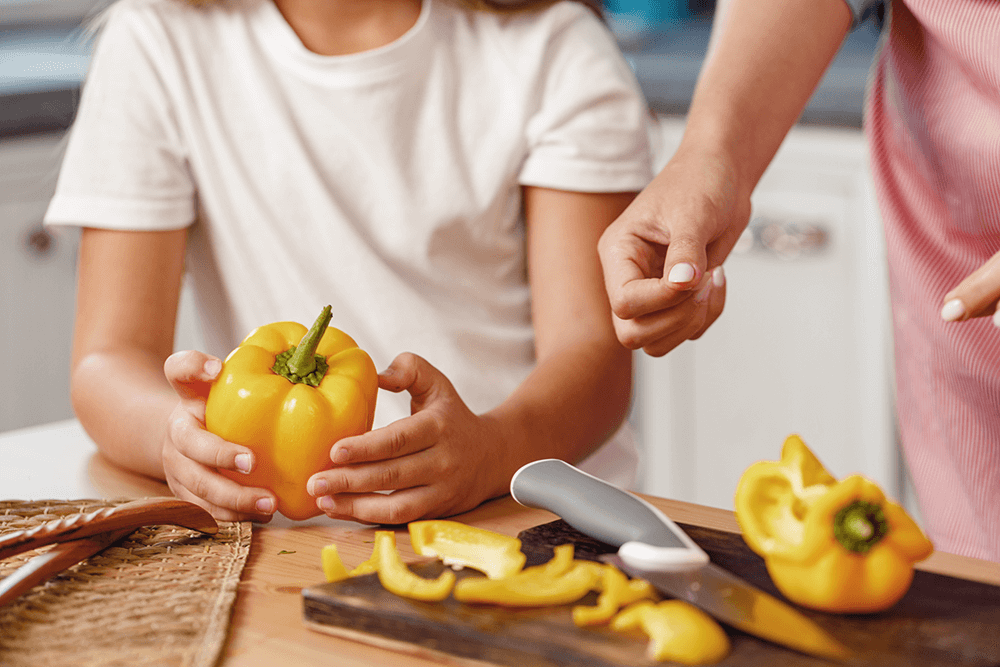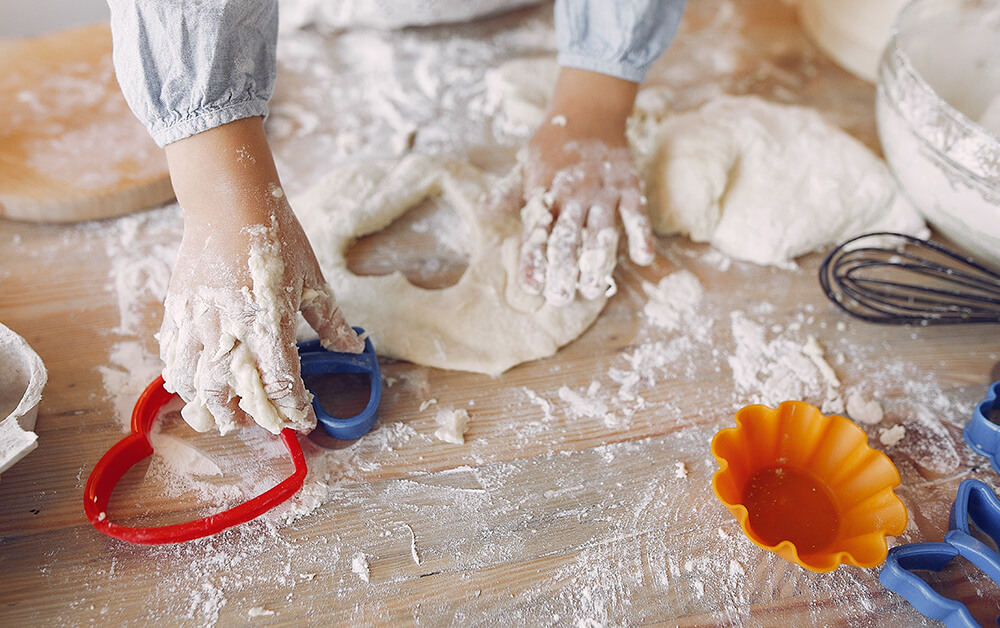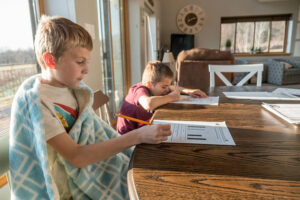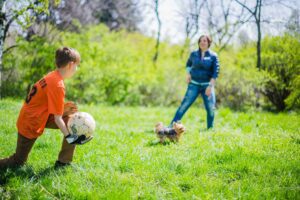5 ways you can help your child practice maths in the kitchen
Young children learn the best by doing, being able to relate, and often through games. By learning by doing, children’s experiences become more meaningful, and they retain their knowledge. For example, cooking contains a lot of maths without us even thinking about it. And the kitchen is a place filled with shapes, measurements, time and following logical steps – all things maths concepts.
That’s why cooking with your children is such a good way for you to incorporate learning maths into a daily task without it having to take extra time.
We have summarized five maths activities to make it easier for you as a parent to practice maths in the kitchen with your child.
Number Recognitions
One of the easiest ways of practising maths while cooking is by encouraging your child to find numbers on, for example, the recipe, ingredients packaging, or the oven. It could be as easy as recognizing symbols as numbers or asking how many times they can find a number in a recipe.Counting ingredients
There are many fun and easy ways in how you can count ingredients together with your child. The easiest is by counting the total of ingredients one by one. Start by putting a small number (3–4) of the ingredients on the kitchen table. Then, ask your child to count the number of pieces of ingredients, using their finger to point at them one at a time while counting out loud. Next, help them keep track of the already counted ones by moving the already counted pieces into a new pile.
When your child is comfortable with counting smaller numbers of ingredients, you can move on to count the total number of ingredients. You can also divide the ingredients into different piles and ask which one has the most of them. By doing so, not only are you helping your child with counting, but also with the understanding of numbers’ different values.

Add or take away ingredients
When your child is comfortable counting the ingredients, you can add extra spice by introducing simple addition and subtraction. Add or take away an ingredient and ask how many they are now. As your child grows more comfortable, you can try adding or taking away more than one piece of food at a time.Recognizing patterns and shapes
Knowledge of early mathematical concepts is not only purely numbers and counting. For example, pattern recognition and geometry are also a part of maths understanding and easy to practice in the kitchen to improve your child’s thinking and experience of patterns and shapes.
One way of incorporating shapes into your time spent cooking together is by looking at the shapes of bowls, utensils, and tins. Ask your child what shape they have and to find something else in the kitchen with the same shape. Cookie cutters are another great tool for talking about shapes. Discuss which shapes are curved or straight, how many corners they have, and what name the shapes have.
You can also add pattern recognition into the discussion, for example, when plating the food. Asking your child to create or recreate a pattern with their veggies also makes them keener to eat their greens!

Understanding time
When it comes to cooking, an understanding of time is essential. It makes it perfect timing for you to practice time with your child while cooking together. There are many ways to help your child develop an understanding of time in the kitchen. One way is to tell your child that the ingredients need to be stirred for ten seconds, asking them to do it while counting to ten – or down from ten!
Sometimes cooking also requires waiting in between steps. You can keep your child motivated during these moments by telling them how long the food is cooking without your involvement. Put this in perspective by telling the child that this is the same amount of time as one episode of, for example, their favourite TV show. You can also ask them how long they think it will take to set the table and if they think they will have the time to do it when the food is cooking.
Daily maths practice doesn’t have to be time-consuming or add extra tasks to your days.
By letting your child be involved in your cooking, you can help them develop their understanding of early mathematics. And as you see, it doesn’t have to be complicated. You can even use your family’s favourite recipe – no special recipes are needed!
However, if you want even more guidance, feel free to cook with your child using our maths stuffed recipe of a mathematical pizza! Not only is the recipe child friendly and filled with mathematical steps. We have also added guidance and step-by-step instructions to give it an extra maths flavour.
Happy cooking with your young ones!


